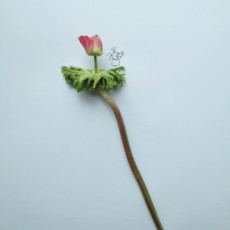
Wild on my street
Wild on my street is both an educational project led by the association Tela Botanica, and the scientific project of a Muséum National d’Histoire Naturelle laboratory that aims to better inventory and understand the distribution of plant species in the city. You don’t need to be a botanist, any city dweller interested in the future of the biodiversity around them can participate.
Wild on my street is a fun, informative and useful research program. Your data will allow researchers to complete their knowledge of species distribution in the city, the influence of green spaces (even as small as the foot of a tree) and the influence of urban structures on the quality of biodiversity. Researchers need your data! The following tools will help you with the process.
Have a look on the presentation video:
The protocol:
Choose an area to be inventoried (whole street, part of a street, school yard...) and fill in the location details on the field sheet. If you make your observations in a courtyard or on a terrace, remember to specify this in "Notes" when entering the data. You are now ready to set off in search of wild plants!
Your objective is to recognize all the species present in your chosen area. To identify the plants, we provide you with an identification key (see page 83) to be used when possible in conjunction with the field guide Sauvages de ma rue (French only). You can also use online or mobile applications such as Pl@ntNet (however, it seems to us preferable in terms of reasoning to let the pupils use the identification key before checking their identification on the application).
If you can’t identify a plant, don’t worry! You’ll be able to indicate an "unidentified" plant and attach a photo when entering the data.
Let’s begin by having a look on these documents:
- The participant's kit which provides all the tools you will need to be part of this journey, such as the (printable!) identification key,
- The observatory's poster,
- A little memo that would probably help you improve your photographs!
When to participate?
This protocol can be carried out year-round. But plants are more easily recognizable when their flowers are present, usually at the start of the school year or in spring.
What should I do before?
Scouting ahead of time:
Before your session, you can prepare a mini identification key specific to your school or institution, should your pupils be unable to use the tools as planned (the field guide Sauvages de ma rue, the identification included herewith, etc.). You can also use the photo quizzes available on our website.
How to prepare your pupils:
If your outing won’t last more than an hour, we recommend holding a special session on plant observation, photography and field guide use ahead of time.
Getting to know the protocol:
To avoid forgetting anything in the field that might prevent data entry afterwards, we recommend presenting the protocol and field sheet to your class ahead of time.
Getting your pupils ready!
You can also use the photo quizzes available on our website.
Materials you’ll need (per group of 3-4 pupils)
- A camera with macro setting (not mandatory),
- Something to write with,
- Field sheet,
- Identification key,
- The field guide Sauvages de ma rue (only in french).
A few precisions
What is a wild plant?
A wild plant is a plant that grows spontaneously, unlike a horticultural plant planted by a gardener. But over time, some garden center plants, for instance passion flowers, have ended up colonizing our streets spontaneously.
Where to participate?
You can make your observations in every crack and cranny. You can participate in the courtyard of your establishment, on a pavement, etc.
I can’t determine a species…
Despite our identification key, it can sometimes be difficult to identify a plant (for example, if it is not in flower). No need to panic! You can indicate “unidentified” plant and attach a photo when entering the data. And you could always come back a few days later to try to identify it again (it may have bloomed in the meantime). You will then be able to change your entry.
Finally, don’t hesitate to use the Pl@ntnet application which offers identification based on a simple photo.
Your objective is to recognize a maximum of plant species present in the chosen area.
To determine the plants, we have created a determination key that refers to the book: "Sauvages de ma rue - Le guide des plantes sauvages des villes de France". This book presents the 240 wild plants most common in the streets in France. Each plant is described in a clear manner, without technical terms, so that any city dweller, without any training in herbology, can learn to identify those that grow in their immediate environment. The descriptions are provided with photographs and information is given on the ecology of these species (the places where they are found preferentially) as well as on their food or medicinal uses.
In this book, plants are grouped by the color of their flowers, so you can easily determine the plant if it is in flower.
List on the field sheet all the species observed and their environment (foot of a tree, wall, lawn...). Any doubt about the species? Difficulties to identify? Here is a tip: take pictures of the plants, and back in class you can use the identification tools provided.
Sending your observations
It will take only a few minutes! Log in and enter your data on vigienature-ecole.fr. Please, let us know if you did not see any individuals: this is important information for our researchers! Do not forget to provide some context, such as the type of environment (urban, rural?) or the use of phytosanitary products. All these data are likely to explain the plants’ distribution over time and space (observation area). This step, yet mandatory, will be asked only once for each area. Please find here all the information you will need to collect prior to the class session.
You may find that questions and hypotheses concerning the distribution of living beings arise from your observations (are there as many birds in the city as there are in the countryside? Does the use of pesticides have consequences on snails, etc.). The data positioning tools included in the participation report, which is sent at the end of the school year to all who are registered on the website, provides answers to some of these questions. The graphics included in the report position the observations made in a given establishment in relation to the data collected as a whole. For example, you will learn whether observing 4 species of snails in an establishment is a sign of healthy or poor biodiversity. Explanations are provided to help you interpret the results. These documents encourage your pupils to consider which actions could be taken to promote biodiversity in the courtyard or playground (installation of feeders, setting aside plots of land, etc.).By repeating the observations, you will be able to monitor the impact of these actions over time.
You can also process the data you’ve collected in other ways. For example, you can create graphics representing the species present in different areas of the establishment. These graphics allow pupils to visualize in a simple manner that there is a significant difference between two areas of the schoolyard. They can then propose hypotheses to explain the population differences (abiotic factors such as humidity, temperature for example).
You can also produce graphs showing the evolution of the number of species present seasonally. They allow you to follow changes in the number of individuals over the course of the year (for example, for the notion of bird migration). It is also possible to produce such graphs over several years by accumulating the numbers recorded month by month.
Many other illustrations are possible. For example, pupils can be asked to situate their data on an aerial photo of the school. They can then offer explanations for possible differences in the occupation of the various areas of the school.
Finally, you will find a wide range of educational activities on our website. Some of them are suggestions for introducing this activity but others take it a step further. For example, we have developed ways for your pupils to learn how to analyze data in the manner of an ecological researcher, or for them to think about actions to be taken within their establishments to promote biodiversity.
Protocole sauvages : Savages of my street
